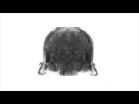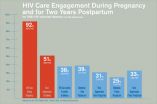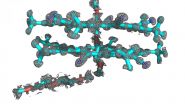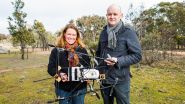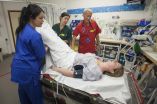(Press-News.org) MADISON -- Colorful and expressive, the eyes are central to the way people interact with each other, as well as take in their surroundings.
That makes amblyopia -- more commonly known as "lazy eye" -- all the more obvious, but the physical manifestation of the most common cause of vision problems among children the world over is actually a brain disorder.
"Most often in amblyopia patients, one eye is better at focusing," says Bas Rokers, a University of Wisconsin-Madison psychology professor. "The brain prefers the information from that eye, and pushes down the signal coming from the other, 'lazy' eye. In a way, it's better to think of the better eye as a bully, rather than the poorer eye as lazy."
As the brain develops its preference for the dominant eye's input, it alters its connections to the weaker eye, according to a study Rokers and colleagues published this week in a special edition of the journal Vision Research.
"If you continually have that bullying happening, that changes the signals coming from the lazy eye," Rokers says. "We wondered, if you don't have as many signals traveling back and forth, does that come with a physical change in those passageways?"
Using a brain scanning method called diffusion-weighted imaging, the researchers mapped three sets of pathways known to carry visual information from the eyes to the brain. In people with amblyopia, the researchers saw water diffusing more easily down the brain's visual pathways.
"What we think may be happening in amblyopia is that the conductive sheath around neurons becomes thinner," Rokers says. "In order to conduct information from one location to another, neurons have a sheath of material called myelin around them to insulate and speed up processing. When the myelin is thinner, there is less of it in the way and the water diffuses more easily."
This understanding of the structural effects of amblyopia may improve treatments for amblyopia and similar vision disorders in which sufferers have trouble judging distance and location of objects in parts of their visual field.
The most common medical response to lazy eye is to correct the cause -- most often muscular misalignment of the eyes, but sometimes a misshapen lens -- through surgery, and put a patch over the amblyope's strong eye to force the brain to adapt to using the formerly lazy one. But that treatment is usually limited to children.
"You don't see any adults walking around with patched eyes, because adults' brains are less plastic, less trainable, and we think the patch approach doesn't have any effect late in life," says Rokers, whose group's work has been funded by the Wisconsin Alumni Research Foundation and the Netherlands Organization for Scientific Research. "But that belief is changing, and this diffusion-weighted imaging approach will help us understand whether, and how much, brain training treatments work."
It will also aid in the development of new treatments -- like some Rokers and ophthalmologists are developing using video games and virtual reality headsets.
"You can put patients in the scanner and see if your treatment actually has an effect," Rokers says. "We haven't tried many different kinds of treatments, but with a way like this to assess success, you can reward experimentation."
INFORMATION:
-- Chris Barncard, 608-890-0465, barncard@wisc.edu
DOWNLOAD VIDEO: https://uwmadison.box.com/lazy-eye
Pregnancy could be a turning point for HIV-infected women, when they have the opportunity to manage their infection, prevent transmission to their new baby and enter a long-term pattern of maintenance of HIV care after giving birth--but most HIV-infected women aren't getting that chance. That is the major message from a pair of new studies in Philadelphia, one published early online this month in the journal Clinical Infectious Diseases, and the other published in July in PLOS ONE.
The studies, led by a team of researchers from Drexel University and the Philadelphia Department ...
A team from the University of Illinois at Urbana-Champaign and Indiana University combined two techniques to determine the structure of cyanostar, a new abiological molecule that captures unwanted negative ions in solutions.
When Semin Lee, a chemist and Beckman Institute postdoctoral fellow at Illinois, first created cyanostar at Indiana University, he knew the chemical properties, but couldn't determine the precise atomical structure. Lee synthesized cyanostar for its unique ability to bind with large, negatively charged ions, which could have applications such as ...
Many political leaders, scientists, educators and parents believe that failure is the best teacher.
Scientists have long understood that the brain has two ways of learning. One is avoidance learning, which is a punishing, negative experience that trains the brain to avoid repeating mistakes. The other is reward-based learning, a positive, reinforcing experience in which the brain feels rewarded for reaching the right answer.
A new MRI study by USC and a group of international researchers has found that having the opportunity to learn from failure can turn it into ...
Since the early days of fertility treatment, women undergoing IVF treatment have had to place a hormonal gel in their vagina on a daily basis for at least 14 days after embryo transfer. The hormone is necessary to increase the chances of pregnancy, but it may also cause some side effects in the form of irritation and leaky discharge.
However, the results of a new scientific study suggest that women will be able to avoid this kind of discomfort in the future.
"Fertility treatment is a physical and mental challenge for childless couples. The daily treatment with hormonal ...
Researchers at The Australian National University (ANU) and The University of Sydney have developed a world-first radio-tracking drone to locate radio-tagged wildlife.
Lead researcher Dr Debbie Saunders from the ANU Fenner School of Environment and Society said the drones have successfully detected tiny radio transmitters weighing as little as one gram. The system has been tested by tracking bettongs at the Mulligan's Flat woodland sanctuary in Canberra.
"The small aerial robot will allow researchers to more rapidly and accurately find tagged wildlife, gain insights into ...
A research team at Linköping University, together with colleagues in Europe and the United States, has shown that at extremely high pressure even the innermost electrons in the atomic nuclei of the metal osmium begin to interact with each other, a phenomenon never witnessed before. The findings have been published in Nature.
"If we know more about how a matter works, we will be in a better position to develop materials that withstand extreme conditions. In research we're constantly making advances, but in this case we've taken a giant leap", says Igor Abrikosov, ...
A new £6.65 million grant for research aimed at accelerating the discovery and application of new advanced materials for the energy sector was announced today by the Engineering and Physical Sciences Research Council (EPSRC).
The grant, awarded to a team led by Professor Matthew Rosseinsky of the University of Liverpool, will support a programme, Integration of Computation and Experiment for Accelerated Materials Discovery.
Professor Rosseinsky will head up an expert team at Liverpool and University College London that will work to tackle the challenge of designing ...
Noroviruses are the predominant cause of gastroenteritis outbreaks in community settings such as hospitals, cruise ships, and schools. The virus is extremely contagious and is mostly transmitted via "fecal-oral-route", i.e., through contaminated hands or contaminated food. Symptoms include violent and sudden onset of diarrhea, vomiting, and nausea.
"It is therefore important to provide a safe and harmless disinfectant against human norovirus," explains Grant Hansman, head of CHS junior research group at the German Cancer Research Center noroviruses and the University ...
A simple, safe and cost-free modification to a physical technique used to treat patients in the emergency department with an abnormally fast heart rhythm could improve its effectiveness by more than a quarter, according to a study published in The Lancet today (25 August 2015).
An abnormally fast heart rhythm, also called supraventricular tachycardia, can be distressing for patients and many come to emergency departments for treatment. Symptoms can include chest pain, light-headedness, dizziness and breathlessness. Episodes can last from a few seconds or, in extreme cases, ...
This news release is available in German. Trillions of bacteria populate the human gut - which makes them more common than any other cells in our body. The composition of this bacterial population is very variable and influenced by our diet. Diseases, but also antibiotic treatments can induce significant shifts in this equilibrium. If entire bacterial groups suddenly multiply heavily, critical situations occur. They damage the intestinal tissue and cause inflammations. How such shifts are triggered largely remained a mystery. Physiologists from the University of Zurich ...
